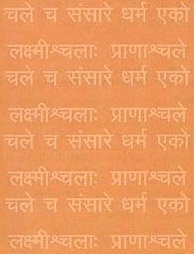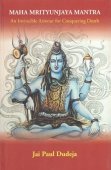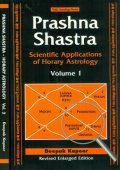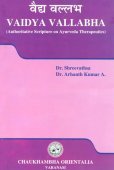Awareness: 1 definition
Introduction:
Awareness means something in Hinduism, Sanskrit. If you want to know the exact meaning, history, etymology or English translation of this term then check out the descriptions on this page. Add your comment or reference to a book if you want to contribute to this summary article.
In Hinduism
Samkhya (school of philosophy)
Source: ORA: Amanaska (king of all yogas): (samkhya philosophy)(The state of) Awareness is denoted by the Sanskrit term Draṣṭṛtva, according to the Sāṅkhyakārikā.—In Brahmanical literature, udāsīna often means a neutral person, such as in the compound; “friends, neutrals and enemies”. [...] Also, udāsīna has been used in the Sāṅkhyakārikā to qualify the individual soul. After describing the qualities of the Puruṣa as the state of witnessing, isolation, neutrality, awareness (draṣṭṛtva) and non-agency in Kārikā 19, the Sāṅkhyakārikā (20) then qualifies Puruṣa as udāsīna.

Samkhya (सांख्य, Sāṃkhya) is a dualistic school of Hindu philosophy (astika) and is closeley related to the Yoga school. Samkhya philosophy accepts three pramanas (‘proofs’) only as valid means of gaining knowledge. Another important concept is their theory of evolution, revolving around prakriti (matter) and purusha (consciousness).
See also (Relevant definitions)
Full-text (+466): Bhana, Vimarsha, Jnanatappu, Shaktitattva, Sadbodha, Janajagarana, Rigpa, Sakshin, Nirupana, Prajnanam, Sampajanna, Avidya, Cetana, Janajagran, Kriyajnana, Huttubuddhi, Bodha, Bindu, Smrityupasthanatathata, Aishvaryajnana.
Relevant text
Search found 252 books and stories containing Awareness; (plurals include: Awarenesses). You can also click to the full overview containing English textual excerpts. Below are direct links for the most relevant articles:
A History of Indian Philosophy Volume 2 (by Surendranath Dasgupta)
Part 5 - Vedānta Doctrine of Soul and the Buddhist Doctrine of Soullessness < [Chapter XI - The Śaṅkara School of Vedānta (continued)]
Part 14 - Ānandabodha Yati < [Chapter XI - The Śaṅkara School of Vedānta (continued)]
Part 24 - Rāmādvaya (a.d. 1300) < [Chapter XI - The Śaṅkara School of Vedānta (continued)]
The Great Chariot (by Longchenpa)
Part 1b.1a - The support: The explanation of alaya and consciousness < [B. The extensive explanation of the nature of karma]
A. The teaching of the establishment of the kayas and wisdoms, by completing the path < [Chapter XIII - The Fruition, the Great Self-existence]
Part 1b.1c - The occasion of awareness < [B. The extensive explanation of the nature of karma]
Guhyagarbha Tantra (with Commentary) (by Gyurme Dorje)
Chapter 13 - Nucleus of Most Secret Esoteric Instructions < [Chapter 13 (Text and Commentary)]
Text 13.8 (Commentary) < [Chapter 13 (Text and Commentary)]
Text 1.5 (Commentary) < [Chapter 1 (text and commentary)]
Reverberations of Dharmakirti’s Philosophy (by Birgit Kellner)
Balancing the Scales: Dharmakīrti Inside and Out
Dharmakīrti against Physicalism
Nirvikalpaka Pratyaksha (study) (by Sujit Roy)
Chapter 2c - Jayanta’s interpretation of ‘avyapadeśyam’ term
Chapter 5f - Nirvikalpaka Pratyakṣa according to Prabhākara
Chapter 5i - Nirvikalpaka Pratyakṣa in Viśiṣṭādvaita Vedānta
A History of Indian Philosophy Volume 3 (by Surendranath Dasgupta)
Part 9 - Error and Doubt according to Veṅkaṭanātha < [Chapter XX - Philosophy of the Rāmānuja School of Thought]
Part 15 - Dialectical criticism against the Śaṅkara School < [Chapter XX - Philosophy of the Rāmānuja School of Thought]
Part 12 - Epistemology of the Rāmānuja School according to Meghanādāri and others < [Chapter XX - Philosophy of the Rāmānuja School of Thought]
Related products
(+3 more products available)





